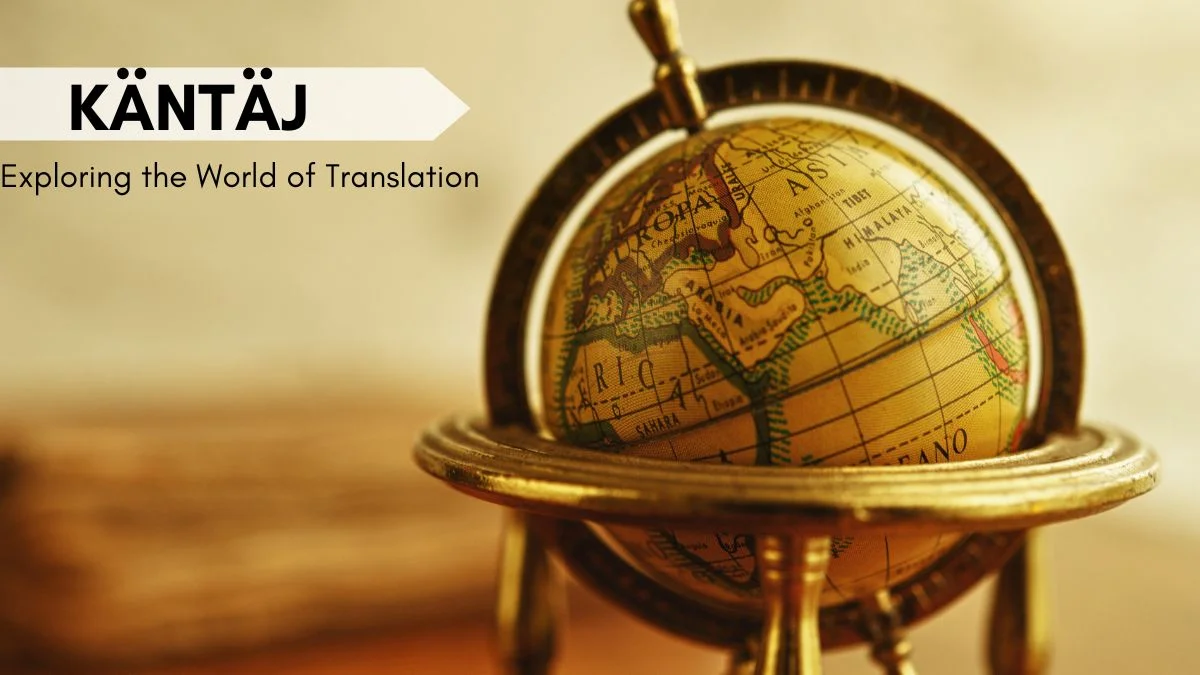If you’ve ever relied on Google Translate to make feel of a menu out of the country or marveled on the seamless translation of your preferred novel, you then’ve encountered the wonders of translation. Translators—or because the Finnish call them, “käntäjät”—do extra than alternate words from one language to any other. They act as cultural mediators, bringing that means and essence across borders. But what does it take to be a käntäj, and why does their position count in our increasingly interconnected global?
In this article, we’ll dive into the sector of käntäj and discover translation as an art, a technology, and a skill that connects human beings, ideas, and cultures.
What Does It Mean to Be a Translator?
Translators, in essence, are professionals educated to transform textual content from one language (the supply) to any other (the target). They differ from interpreters, who work with spoken language. While interpreters need to think on their feet, translators have the time to refine and craft each sentence. However, each require a deep knowledge of languages, cultures, and the nuances that phrases can convey.
Must read: Arzu Ozergul Casa de Las Lenguas: More Than Just a Language School
The Art of Translation
Translation goes past substituting phrases—it’s about shooting tone, emotion, and reason. In literature, for example, translating poetry calls for creative ability. Translators have to pick out phrases that hold rhythm, rhyme, and mood. In cases where literal translations fall short, translators rely upon creativity to deliver the meant meaning, even though meaning altering terms barely to attain similar emotional effect.
The Science of Translation
Though artistic, translation is also fairly clinical. Translators need to recognize the structural variations between languages, from grammar to syntax. For example, a few languages have gendered nouns or awesome verb conjugations, that can have an effect on that means. A translator desires to be meticulous, ensuring every phrase aligns with each the source textual content’s intent and the cultural expectations of the target market.
Key Skills Every Translator Needs
Being a translator calls for more than fluency in a couple of languages. Here are some essential abilties:
Proficiency in Source and Target Languages: A deep understanding of both languages is essential.
Research Skills: Translators regularly want to research unique subjects, terminology, or cultural references.
Writing and Editing Abilities: Translators need to also write properly of their goal language, making the textual content float naturally and study smoothly.
Understanding Käntäj Across Different Cultures
Culture plays a crucial position in translation. Some terms or idioms truly don’t translate nicely. For example, the English idiom “it’s raining cats and puppies” could sound weird if translated literally in maximum languages. Instead, translators would possibly search for similar expressions within the target language or discover creative approaches to convey the meaning with out an immediate equal.
Why Machine Translation Alone Isn’t Enough
Machine translation gear like Google Translate can be helpful but have their boundaries. They lack human intuition and battle with idioms, tone, and cultural references. For instance, translating a humorous textual content might also bring about nonsensical output if a gadget can not hold close the humor’s underlying context.
The Role of Technology in Modern Translation
Despite its barriers, technology is an asset for translators. Tools like CAT (Computer-Assisted Translation) software program assist speed up the technique through suggesting translations, keeping consistency, and checking for errors. Meanwhile, AI maintains to improve gadget translation accuracy, although it’s nevertheless a much cry from human-satisfactory translation.
Challenges Translators Face
Translators come upon demanding situations past vocabulary. Achieving accuracy is regularly hard, especially whilst coping with idioms, technical terms, or sensitive cultural elements. Ethical issues also can get up, mainly while translating politically charged content material or material that requires cultural sensitivity.
The Evolution of Translation Over Time
Translation has advanced substantially, from historic texts meticulously transcribed through hand to modern virtual translation tools. Throughout records, translators have bridged cultural divides, permitting know-how and tales to unfold throughout civilizations. This legacy maintains nowadays, adapting to the desires of our virtual world.
Translation within the Business World
For corporations, translation is vital in attaining international markets. Brand slogans, commercials, or even product descriptions must be localized to resonate with local audiences. When achieved successfully, translation can enhance a emblem’s picture; whilst mishandled, it can cause misunderstandings or maybe backlash.
Translation in Literature and Media
Translating literature, films, and songs calls for an know-how of the tale’s essence. Translators regularly paintings to keep the unique’s tone and emotion whilst making it relatable to the new target market. They play a essential role in shaping how people throughout cultures understand memories, characters, and messages.
Becoming a Translator: Education and Career Pathways
To end up a translator, many pursue language studies, certifications, or specialised training in fields like clinical or prison translation. Career opportunities variety from freelance work to in-house positions at multinational agencies. Many translators additionally find work in publishing, media, and tech industries.
Future of Translation “käntäj”: Where Are We Headed?
The future of translation is probable to involve greater collaboration between human translators and AI. While machines can handle truthful tasks, human translators carry context, intuition, and cultural knowledge. In the coming years, AI may also become a powerful tool that enhances human translation, but it’s not likely to update the need for professional käntäj absolutely.
Conclusion
Translators are useful bridges in our international society, allowing us to apprehend and admire other cultures. From literature to commercial enterprise, their work enables connection, expertise, and change. As technology advances, the role of translators will evolve, however their middle project stays the equal: to convey human beings collectively throughout languages and borders.
FAQs About the Käntäj
What’s the difference among translation and interpretation?
Translation focuses on written text, at the same time as interpretation deals with spoken language.
How do translators hold the essence of a story?
They carefully choose words that in shape the tone, fashion, and which means of the original.
Is it possible to translate without understanding the subculture?
Culture is essential, as it influences phrase desire, context, and meaning. A translator without cultural expertise dangers inaccuracies.
Can everyone emerge as a translator?
With the proper talents, education, and ardour, many can pursue translation, however mastery calls for experience.
What’s the destiny of gadget translation?
Machine translation will hold enhancing but will probably complement, no longer replace, human translators.














